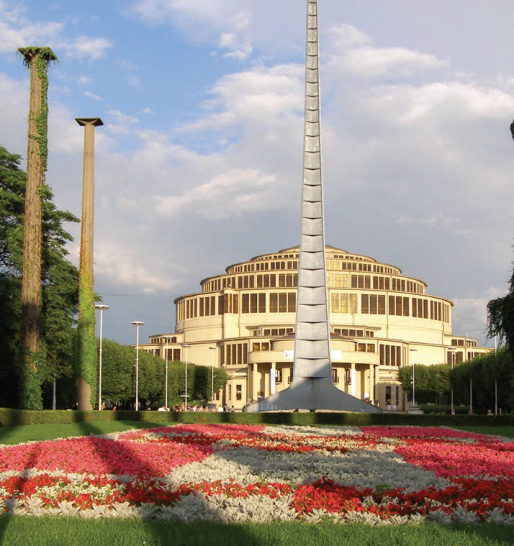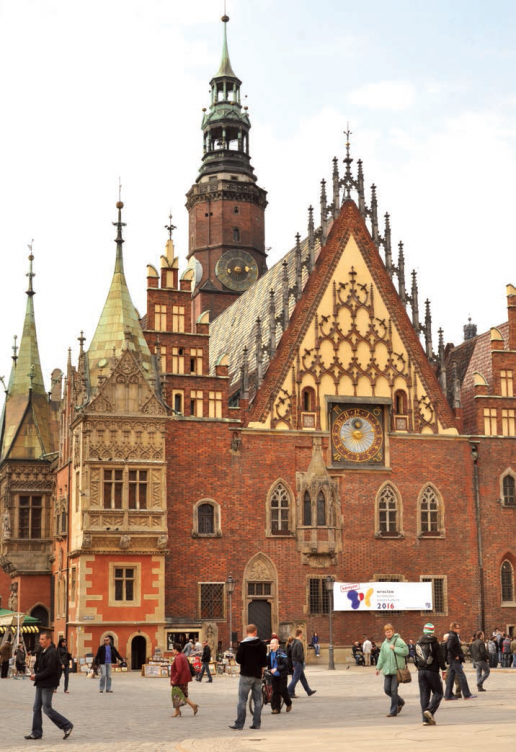Welcome to Wrocław
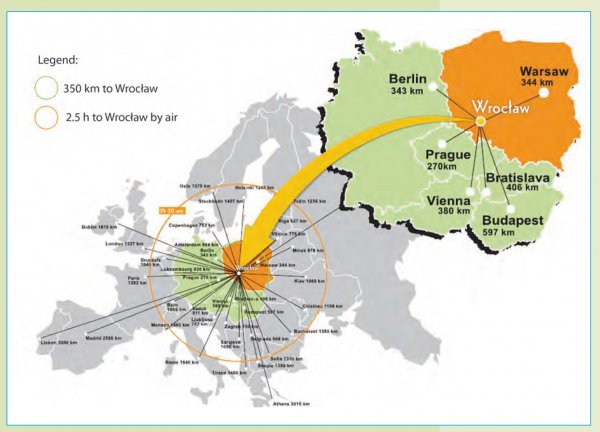
Location: Lower Silesia
Lower Silesia, one of the most attractive, modern, and prosperous regions of Poland, covers the south-western area of the country bordering Germany and the Czech Republic. Main European transport
routes cross here. Its modern, diverse, and dynamic economy integrates rich industrial tradition with high technology. Numerous business support institutions have recently gained attention from the
largest investors in the global economy. The region`s inhabitants are active, industrious and, most of all, open to other cultures, in the best tradition of this multi-cultural melting pot of
Polish, Czech, German, Jewish, and Austrian influences.
The main city of the region – Wrocław – is one of the most influential municipal centers of Poland, a proud aspirant to a title of a European metropolis. Norman Davies, an outstanding researcher of
European history, has hailed the city “a flower of Europe” in his monumental monograph of Wrocław: Microcosm: A Portrait of a Central European City.
As a city of great academic, cultural, tourist, and economic significance, Wrocław is regarded as one of the most influential centers of education in Poland. Universities and research institutes of
the city represent a universally recognized high standard of scientific and educational effort. Wroclaw is a City of 29 Universities and Higher Education Institutions, and 100 000 students.
The city’s Lower Silesia Opera House has gained prominence for its monumental, open air staging of classical works, and numerous top class performances take place in the City Filharmonic Hall,
Capitol Music Hall and 14 theater houses. Wroclaw’s cultural offer consists of many music and cinema festivals, some of them gained an international fame, i.e.: Wratislavia Cantans, Jazz on the
Oder, Musica Polonica Nova, Brave Festival, Wrocław Guitar Festival, New Horizons Film Festival. Wrocław stages numerous exhibitions, artistic performances, happenings, concerts, and multimedia
shows. Interesting is to look at Wroclaw from the perspective of travel on the Oder.
Take a look at Wrocław
Basic facts about Wrocław
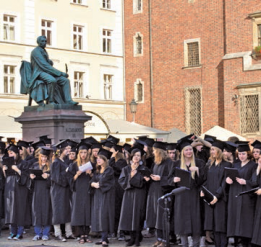
- City area: 293 km square
- Population: 634 thousand
- Population of agglomeration: approx. 1 million
- Within driving distance to Prague, Berlin, Vienna and Warsaw
- 1000-year-old city
- 12 verdant islands
- 112 bridges
- Wrocław has been selected as a European Capital of Culture in 2016 (along with San Sebastián).
The city of a thousand years is abundant with world-class historic monuments and cultural objects.The privileged position of Wrocław over other Polish cities is based on such factors as strategic
location,convenient transport (airport, motorway, river transport, railways), life standard, rich infrastructure,and stability. Wroclaw is also an industrial city, rapidly developing IT sector,
electronic, chemical andpharmaceutical industry. These advantages are attested to by many successful foreign investments, such as:Allied Irish Bank, APSYS, ABB, Credit Agricole, Capgemini, Cadbury,
Castorama, CARGILL, Decathlon,Fagor, Generall Bottlers, Hewlett-Packard, IBM, IKEA, Siemens, Volvo, WABCO and Whirlpool.
Summing up, Wrocław builds its current and future prosperity on three pillars: economy, culture and higher educations.
Free Time, Culture and Entertainment
A cultural centre of Lower Silesia and an attractive site for sightseeing, Wroclaw is also a great place to take advantage of good entertainment. Various museums, theatres, music houses and
galleries present a continuous series of artistic events. The historical centre of Wroclaw with its magnificent architecture offers a journey throughout centuries. In the evenings, numerous clubs
and pubs become places where students from different Wroclaw universities integrate and enjoy their free time.
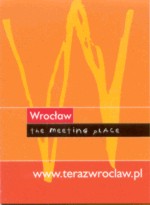
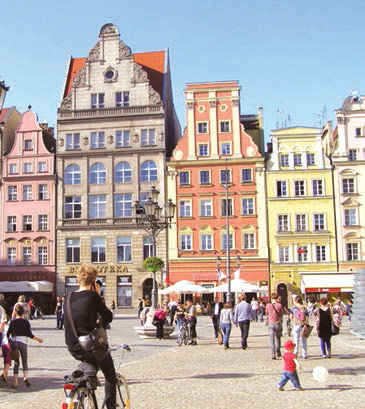

Museums
Municipal Museum of Wroclaw (Muzeum Miejskie)
Sukiennice 14/15
The Municipal Museum consists of 6 branches:
|
National Museum in Wroclaw
(Muzeum Narodowe we Wroclawiu)
Powstancow Warszawy Square 5
|
History Museum (Muzeum Historyczne)
Sukiennice 14/15
Museum of Townspeople's Art
(Muzeum Sztuki Mieszczanskiej)
Rynek - Ratusz
Museum of Archeology (Muzeum Archeologiczne)
Cieszynskiego 9
Museum of Medal Art (Muzeum Sztuki Medalierskiej)
Kielbasnicza 5
Museum of Military Accessories - City Arsenal
(Muzeum Militariow - Arsenal Miejski)
Cieszynskiego 9
Museum of Cemetery Art (Muzeum Sztuki Cmentarnej)
Slezna 37/39
|
Museum of Architecture (Muzeum Architektury)
Bernardynska 5
Museum of Ethnography (Muzeum Etnograficzne)
Kazimierza Wielkiego 34
Museum of the Archdiocese (Muzeum Archidiecezjalne)
Katedralny Square 16
The Panorama of the Battle of Raclawice
(Panorama Raclawicka)
Purkyniego11
|
Museum of Contemporary Art
(Muzeum Sztuki Wspolczesnej)
Powstancow Warszawy Square 5
|
Museum of Book Art (Muzeum Sztuki Ksiazki)
Powstancow Warszawy Square 5
|
Museum of the University of Wroclaw
(Muzeum Uniwersytetu Wroclawskiego)
Uniwersytecki Square 1
|
Museum of Geology (Muzeum Geologiczne)
Cybulskiego 30
|
Nature Museum of the University of Wroclaw
(Muzeum Przyrodnicze Uniwersytetu Wroclawskiego)
Sienkiewicza 21
|
Museum of Mineralogy
(Muzeum Mineralogiczne)
Cybulskiego 30
|
Museum of Post and Telecommunication
(Muzeum Poczty i Telekomunikacji)
Krasinskiego 1
|
Branch of the Museum of Mineralogy
Kuznicza 22
|
Theatres
There are 14 theatres in Wroclaw and some of the most established are:
Wroclaw Contemporary Theatre
(Wroclawski Teatr Wspolczesny)
Rzeznicza 12
|
Wroclaw Mime Theatre
(Wroclawski Teatr Pantomimy)
Debowa 16
|
"K2" Theatre
Kuznicza 29a
|
"Ad Spectatores"
Powstancow Slaskich 82/58
|
Music
Wroclaw Philharmonic House
(Filharmonia im. Witolda Lutoslawskiego)
Pilsudskiego 19
|
Music Theatre - Wroclaw Operetta House
Teatr Muzyczny - Operetka Wroclawska
Pilsudskiego 72
|
Lower Silesia Opera House
Opera Dolnoslaska
Swidnicka 35
|
|
Galleries
There are tens of galleries in Wroclaw exhibiting wide range of artistic work: paintings, sculptures, graphics, drawings, glass, ceramic works, photography, jewellery, and weaving art.
Galleries run variety of performances, happenings and multimedia presentations.
Cinemas
Movies are displayed in original language versions with Polish subtitles. There are various cinema types - from large multiplex movie theatres presenting latest premieres to small audience cinemas
offering movies of less commercial and more artistic choice.
Green City
Although a large and economically lively city, Wroclaw is full of greenery and places where one could rest close to the nature. Parks, some of them dating back to the 18th century, cover
considerable part of the city area. Walking through city gardens could be a truly relaxing moment and a pleasure for the eyes. Most famous gardens in Wroclaw are:
Zoological Garden, founded in 1865, and presently the second biggest garden of this kind in Europe.
Wroblewskiego 1-5
Botanical Garden established as a scientific institution of the University of Wroclaw in 1811, and presenting a magnificent collection of plants from all over the world and the biggest cactus house
in Poland.
Sienkiewicza 23
The Japanese Garden created as a part of the World Exhibition in 1913, with its present shape designed in cooperation with the Japanese Embassy and Japanese specialists from Nagoya.
Situated in Szczytnicki Park close to Hala Ludowa (Centenary Hall)
Internet Site about Wroclaw
http://www.wroclaw.pl/ms/english/


